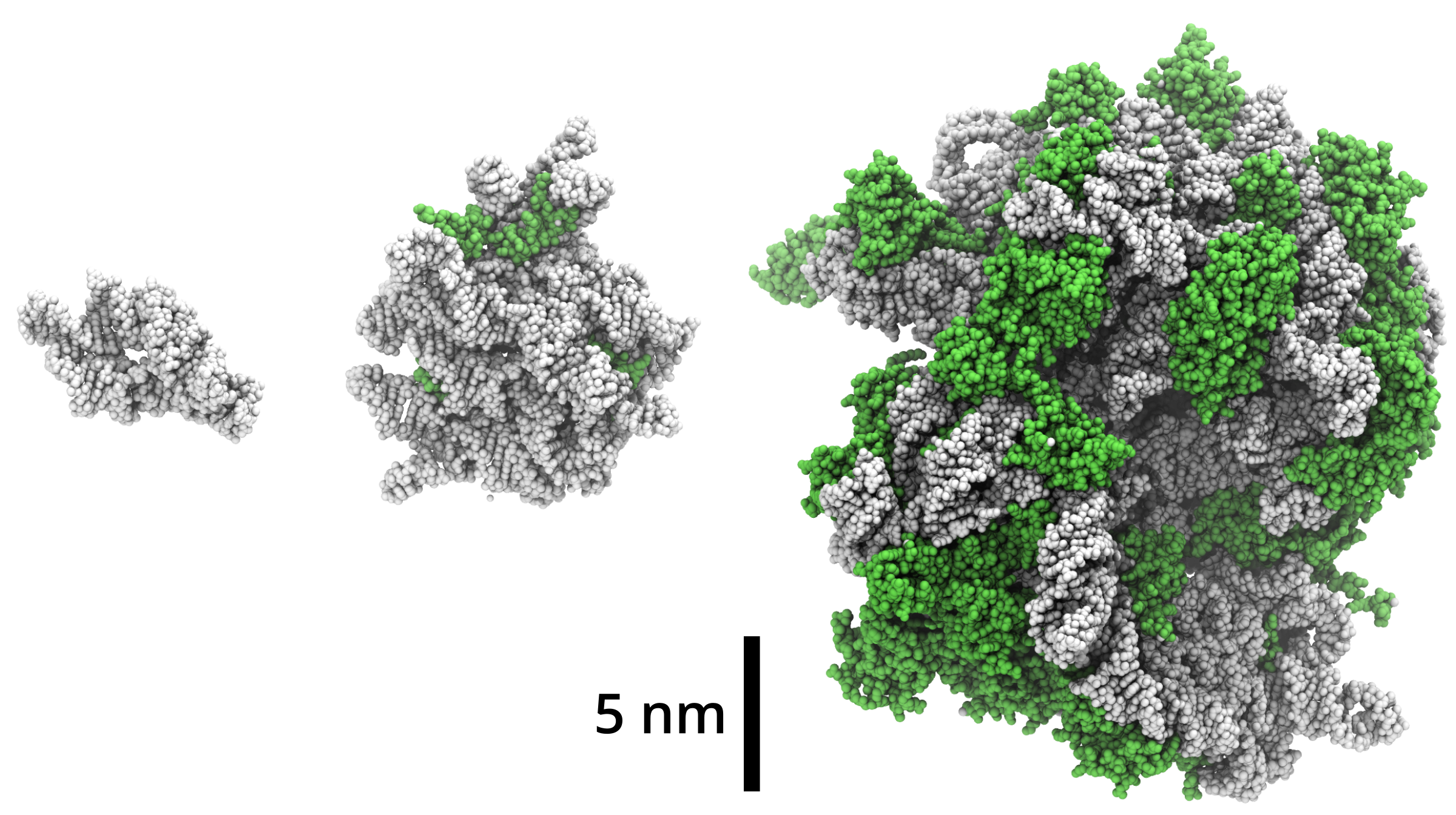Life as we know it nowadays relies on the intricate interplay among nucleic acids - storing information, proteins - performing countless tasks, and lipids - forming surrounding membranes. The interactions among precursors of these molecules probably date back to more than 4 billion years ago, when the first cellular life emerged. All extant cells capable of translation contain ribosomes, molecular machines that produce proteins. Due to their omnipresence and high conservation across all life forms, ribosomes are considered ancient molecular fossils. They attract evolutionary biologists as the best connection to our biological past, leading us to the oldest documented evidence of the key molecular interactions.
The most ancient part of the ribosomes - the protoribosome - surrounds the peptidyl transferase center (PTC), which is responsible for peptide bond formation, an essential process in protein synthesis. Previous studies showed that RNA alone could exhibit PTC activity. However, in the ribosomal structure, "fragments" of several ribosomal proteins (rPeptides) are located close to the PTC and have been implied as relics of the most ancient peptide species that probably interacted with the protoribosomal RNA before the ribosome evolved into the RNA-protein complex as we know it today. The role of these rPeptides has not been studied so far.

The study, performed by the HFSP Research Grant team led by Klara Hlouchova, from Charles University in the Czech Republic, reveals that the rPeptides have a critical role in driving compartmentalization and hence stability of the protoribosome. Two distinct evolutionary stages of the protoribosomal RNA have been studied by the interdisciplinary team: The 617- and 136-nucleotide ("big" and "small") constructs. The small construct, linked to the previously shown PTC activity, is more structurally flexible. While it interacts with rPeptides with lower specificity, the peptides induce coacervation, a process that helps form liquid-like droplets across a wide concentration range. This, in turn, protects RNA from degradation. The big construct, on the other hand, is structurally more defined. The protoribosomal RNA in the big construct interacts with the rPeptides with higher specificity, and coacervation of this complex is less prominent than that of the small construct.
The researchers present a clear example of a "peptide-RNA" coevolution using the very fossil of our biological life. They propose a scenario in which peptides facilitated protoribosome accumulation within liquid droplets. This not only showcases a model protocell-like coacervate, as proposed by Aleksander Oparin a whole century ago, but also provides a possible route from prebiotic chemistry to cellular life as we know it. These findings significantly contribute to our understanding of the origins of life.


































